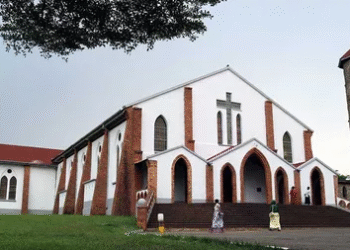By Leonard Kamugisha Akida,
NATIONAL
Millions of school children have slipped into child labour due to a rough and tough economy in the country, the best option for parents is to have these children working or doing menial jobs. 
However, the state minister for gender labour and social development in charge of children and youth affairs, Balaam Barugahara Ateenyi warned that adult jobs should be done by a person who is above 18 years.
Speaking to journalists at an event to commemorate the World Day Against Child Labour at Mestil Hotel Nsambya on Wednesday (June 12), minister Barugahara sent stern warnings to parents and employers employing children to stop doing so with immediate effect.

According to the minister, child labour does not only deprive children of their rights to access to quality education and other opportunities for securing a decent employment in future but also exposes them to danger. He highlighted the causes of child labour as poverty, family members perpetrators, income insecurity, social injustice, lack of public services, school drop out, disasters, limited or lack of social protection among others.
“Parents use their children as part of labour for to supplement their survival but, I have echoed to the distinguished guests that once the Parish Development Model and all these other programmes are implemented or put in place, and money is availed to parents, they could improve their level of income and they can leave the subsistence level to the money economy so that children can concentrate on school,” he said.
Uganda’s prevalence of child labour rose from 21% to 36 % during COVID-19 that stood at over 4 million but now at 40% (6.2m) of 15.7 million children in Uganda aged 5-17years are engaged in child labour, according to UBOS National Labour Force Report, 2021. Of these, 50.4% are males and females are 49.6 percent. The agricultural sector has been pointed out as one of the sectors harbouring the highest number of victims with over 90% of children involved in child labour in Uganda.

“The rates were higher in rural (42%) compared to urban (32%) areas. Of those, 10.4 million (67%) were working in an equal share of six in ten by sex. The findings revealed that eight in ten of the children aged 5-11 years were working yet they are not supposed to work. The proportion of children involved in hazardous occupations or industries, and working for long hours more than 14 hours a day was almost 3%,” added NLFS Report, 2021.
The latest global estimates by the International Labour Organization (ILO) and UNICEF indicate that 160 million children (63 million girls and 97 million boys) were involved in child globally at the beginning of 2020. This accounts for 1 in 10 of all children worldwide. The study revealed that 79 million children, nearly half of all those in child labour were in hazardous work that directly endangers their health, safety and physical moral development.

The European Union representative, Nicolas Gonze noted EU support to Uganda in tackling child labour in the coffee and sugar supply chains.
“Let us renew our collective commitment to free children from labour so they can remain in school and pursue their dreams.”
Gonze disclosed EU plans to establish projects in Busoga region to deal with protection and promotion of rights of children and eliminate child labour.








































